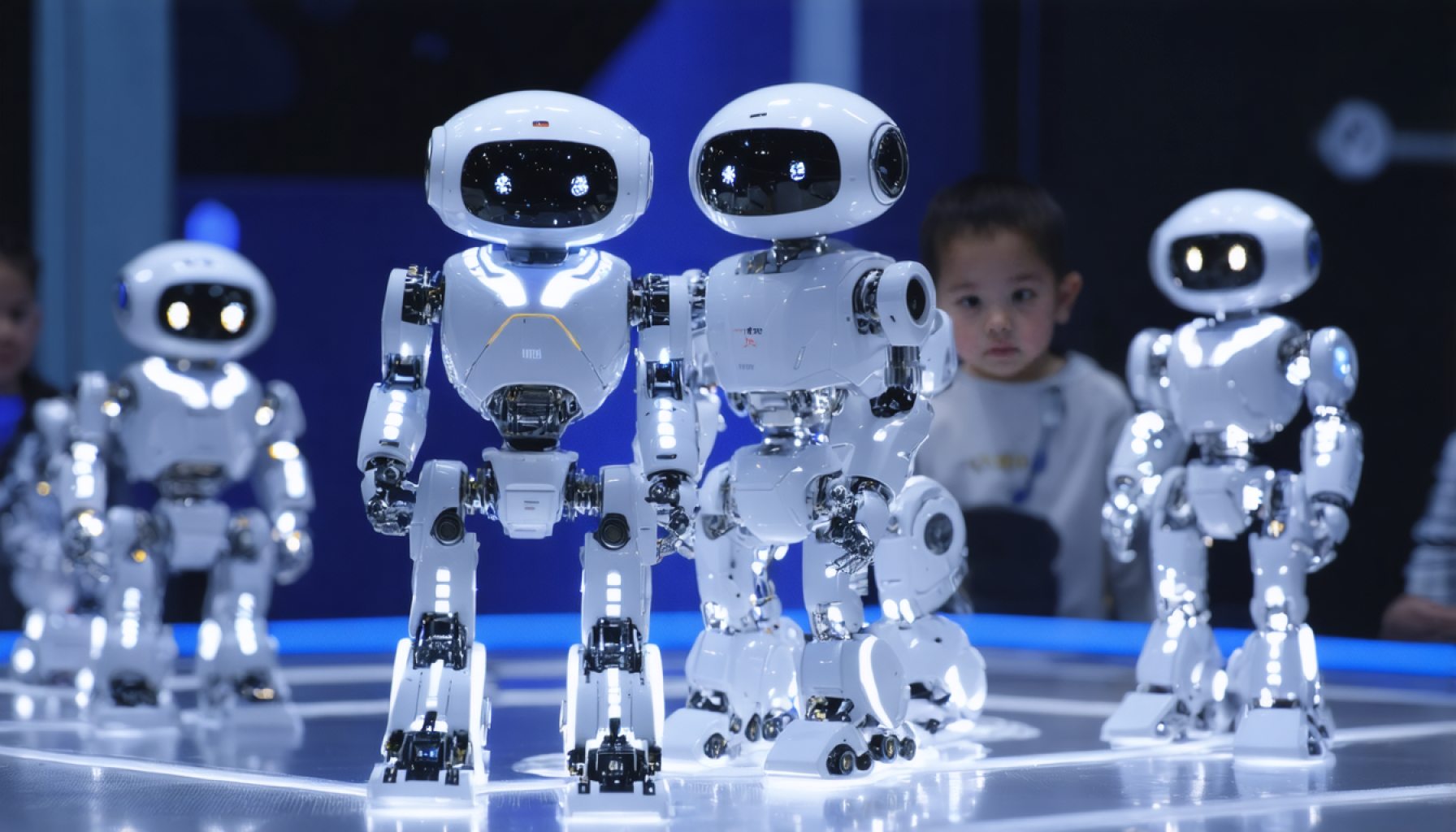- Annual Robotics Face-Off Rapid Relay at Tommie Kunst Junior High showcased student creativity and innovation.
- Students from Santa Maria Bonita School District presented robots crafted over the school year.
- The event highlighted the importance of teamwork and strategic planning, guided by mentors like Pedro Garcia IV.
- Emphasis was placed on unity, mutual respect, and collaboration among young inventors.
- Robotics program fosters critical thinking, problem-solving, and prepares students for STEM careers.
- Education officials affirmed the transformative power of robotics education in student development.
- Participants left with enhanced confidence and skills, essential for future challenges.
- The event celebrated youthful potential and innovation, leaving a lasting impression.
A scene of vibrant creativity and youthful determination unfolded this weekend at Tommie Kunst Junior High School in Santa Maria. The annual Robotics Face-Off Rapid Relay drew a crowd of eager young minds ready to showcase their ingenuity. The air buzzed with excitement as students from across the Santa Maria Bonita School District proudly exhibited the intelligent machines they had meticulously crafted over the school year.
Amidst the mechanical whirs and hums, these budding engineers animated the event not just with their robots but with their infectious enthusiasm for innovation. Young inventors, ranging from pint-sized elementary enthusiasts to savvy middle schoolers, competed fiercely yet harmoniously, striving for accolades that would recognize their technical prowess and collaborative spirit.
In this dynamic realm of gears and circuit boards, the guiding principle was clear: unity. Under the guidance of passionate mentors like Pedro Garcia IV, an inspiring technology and robotics educator, students learned invaluable lessons about teamwork. Garcia encouraged them to openly communicate their strengths and weaknesses, forging alliances grounded in mutual respect and shared strategies. This emphasis on cooperation and strategic planning wasn’t just essential for triumph in the competition; it mirrored the collaborative nature of real-world technological innovation.
The significance of the robotics program extends far beyond the awards and competitions. Education officials voiced their confidence in the transformative power of robotics in developing critical thinking and problem-solving skills. By engaging students in hands-on technological exploration, the program not only prepares them for advanced studies and careers in STEM fields but also cultivates a mindset poised to tackle the complex challenges of tomorrow.
As the event concluded with smiles and trophies, what lingered was a profound sense of anticipation for what these talented youths could achieve. Each student leaving the arena carried with them more than just memories of a day of fun and competition; they departed with newfound confidence and skills that would serve as building blocks for a promising future. The Robotics Face-Off was more than an educational event; it was a vibrant celebration of innovation and a testament to the boundless potential within the next generation.
Igniting the Future: How Robotics Programs Shape Tomorrow’s Innovators
Expanding Horizons in Robotics Education
The Robotics Face-Off Rapid Relay at Tommie Kunst Junior High School wasn’t just an event; it was a spotlight on how engaging students with technology empowers them to overcome future challenges. Beyond showcasing their creations, these young engineers embraced teamwork, critical thinking, and innovation—skills crucial for navigating our rapidly advancing technological landscape.
Real-World Use Cases and Benefits
1. Real-World Problem-Solving Skills:
Robotics education imparts practical problem-solving skills. Students learn to identify issues and formulate solutions using technology—abilities applicable in various fields. According to the World Economic Forum, problem-solving will remain a top skill in demand through 2025.
2. Encouragement of STEM Careers:
Participation in robotics competitions motivates students to pursue STEM careers. The Bureau of Labor Statistics projects a 10% growth in STEM occupations from 2020 to 2030, emphasizing the importance of programs like these that nurture future engineers, scientists, and innovators.
3. Enhanced Collaboration and Communication:
The emphasis on teamwork at the competition mirrors professional environments where collaboration across disciplines is essential. Students learning to articulate ideas and listen—aided by mentors like Pedro Garcia IV—lay the groundwork for effective communication in their future careers.
Industry Trends and Market Forecasts
1. Growing Investment in Educational Technology:
As educational institutions recognize the importance of digital literacy, investments in robotics education are increasing. According to a report by Research and Markets, the global educational robotics market is expected to grow at a CAGR of 19.2% from 2021 to 2026.
2. The Role of AI and Robotics in Education:
AI and robotics are transforming educational practices, offering personalized learning experiences and automating administrative tasks. Schools integrating robotics see improved student engagement and outcomes.
How-To Steps: Starting a Robotics Program
Step 1: Assess and Plan
– Evaluate resources, including potential mentors, equipment, and space.
– Establish clear goals aligning with educational outcomes.
Step 2: Build Partnerships
– Collaborate with local businesses and tech professionals to secure funding and expertise.
Step 3: Curriculum Development
– Design a curriculum blending theoretical knowledge with hands-on projects.
– Focus on interdisciplinary skills and encourage critical thinking.
Step 4: Encourage Student-Led Projects
– Let students take the lead in designing and building robots, fostering leadership and innovation.
Pros and Cons Overview
Pros:
– Promotes critical thinking and problem-solving.
– Encourages teamwork and collaborative skills.
– Increases opportunities for STEM career paths.
Cons:
– Initial costs can be high for equipment and resources.
– Requires ongoing professional development for educators.
Actionable Recommendations
– For Educators: Explore partnerships with local tech firms to enrich resources and mentorship opportunities.
– For Parents: Encourage your child’s participation in robotics clubs and competitions to spark interest in STEM.
– For Students: Take advantage of online resources and tutorials to enhance your skills outside of school projects.
Conclusion
The excitement at the Robotics Face-Off Rapid Relay underscores the transformative potential of robotics education. By investing in programs that teach young minds to innovate, we prepare them to lead in a tech-driven world. Embracing this educational evolution can unlock pathways to success and innovation for future generations.
For further information on robotics education, visit Carnegie Learning.
